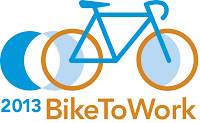Yes, even here in the Pacific Northwest a little meteorological knowledge and technology can help you avoid those raindrops and enjoy a very pleasant ride on your bicycle.
You might be surprised, but the Northwest is one of the best places to bike commute or enjoy recreational biking in the nation.
Think about it. What are the worst conditions for biking? That's easy: icy and snowy roads. It's cold and accidents are inevitable. Good news: western Oregon and Washington have very little snow and ice.
Biking is miserable in hot, humid weather like during summer in the southeast U.S. and the extreme heat of the southwest. Again, we luck out: we rarely see such conditions.
Very heavy precipitation, such as in thunderstorms. is really bad for biking and lightning is dangerous. No problemo here!--we get less thunderstorms than almost anyone else.
Ah, yes, the rain. But consider our rains are concentrated in only a few months (November through February) and the rest of the year is really pretty dry. Our annual precipitation (e.g., Seattle gets about 37 inches a year) is far less than most of the central and eastern parts of the U.S. And when it does rain, it is generally quite light; a rain resistant jacket and pants, coupled with our mild temperatures, leads to a pleasant ride.
Heavy showers like this are very rare in the Northwest.
But it gets even better for you bicycle commuters and enthusiasts! Even when we have wet days it rarely rains steadily for a long period of time. If you can shift your trip by a few minutes, you can often escape the rain. I bike to work nearly every day and rarely get very wet.
Case in point, the in famous shower and sunbreaks. Much of our precipitation comes after a front goes by and we get into cool, unstable air. Such precipitation is convective, meaning we get hit by a shower and then there is a break, followed by another shower an hour or more later. Here is a radar image showing you an example of this....the showers are coming in from offshore.
And even in other weather situations rain is almost never uniform and all you have to do is make sure you wait for the dry or light rain areas.
How can you do that? Smartphone technology solves this problem! There are now hundreds of weather radar apps that give you the latest radar image and a radar animation. It even shows where you are on the image using the GPS or cell-tower navigation function on your phone. Easy to see the dry spots coming! And some radar apps will even tell you exactly when the radar will start. Some are free, but the best ones cost a few dollars. I use Radarscope (see image below) and some folks use DarkSky, which gives you the timing (but reviews are mixed on this one).
Radarscope (left) and DarkSky (right).
I have been trying to convince a few of my students to create a weather-radar-based bicycle app, where you put in your route and tells you when the coast is clear.
And one more thing. It is virtually NEVER raining everywhere around here because of our mountains. If there is a convergence zone going on, with precipitation over north Seattle, head north or south for a dry ride. Wet frontal system over the entire region, with typical southwesterly flow? No problem, head to Sequim, Port Townsend, or northern Whidbey.
Announcement: I will be teaching Atmospheric Sciences 101 (WEATHER) at the UW this fall. This class is accessible folks 60 or older at very little cost (the UW Access Program) and, of course, to regular UW students. This class will give you a good basic understanding of the atmosphere and Northwest weather.
Our Mayor knows how to find the dry spells.






No comments:
Post a Comment